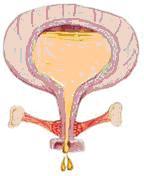Out of the six types of urinary incontinence, stress incontinence and urge incontinence are the most common. Read on to find out the distinct differences of the two:
Stress incontinence
Stress urinary incontinence occurs when you experience involuntary leaks when pressure is put onto the bladder. This means you may experience urine leakage during physical activity, such as running, sneezing, coughing, or lifting. Some people may lose just a few drops, while others may need a change of clothing. Lightweight incontinence pads and male guards are often used to manage leaks.
More common in women, stress incontinence can be caused by a variety of factors. This includes:
- pregnancy and childbirth
- prostate surgery
- excess weight and obesity
- menopause
- medication
- damaged nerves

The first line of treatment for stress incontinence is pelvic muscle training, or kegel exercises. People with stress incontinence have weakened pelvic floor muscles, which support your pelvic organs, and in turn, affect the flow of urine. Kegel exercises involve daily repetitive contractions of the pelvic floor muscles. These exercises can be done by both men and women, of all ages.
Urge incontinence
Urge urinary incontinence occurs due to involuntary bladder spasms. People with urge incontinence, or overactive bladder, are often looking for the closest bathroom because they get sudden and frequent urges to urinate. Sometimes the urge is too great, and you’ll wet yourself because you couldn’t get to the bathroom in time.
More commonly in elderly adults, urge incontinence can be caused by:
- nervous system disease (e.g. Alzheimer’s and Parkinson’s)
- medication
- diet
- bladder infections
One way to treat urge incontinence is through bladder retraining with a timed voiding schedule. The goal is to teach your bladder to suppress those sudden urges. To do so, you use the bathroom every half hour or hour, and then gradually increase this interval over time. When urges do arise, try squeezing your pelvic floor muscles.
